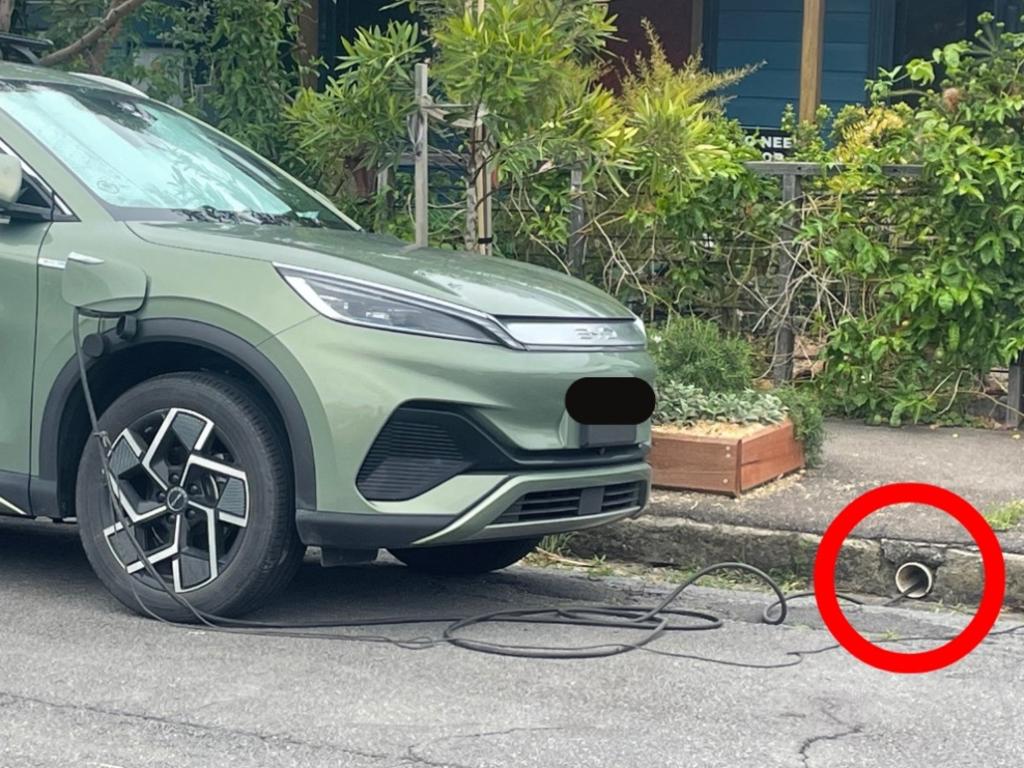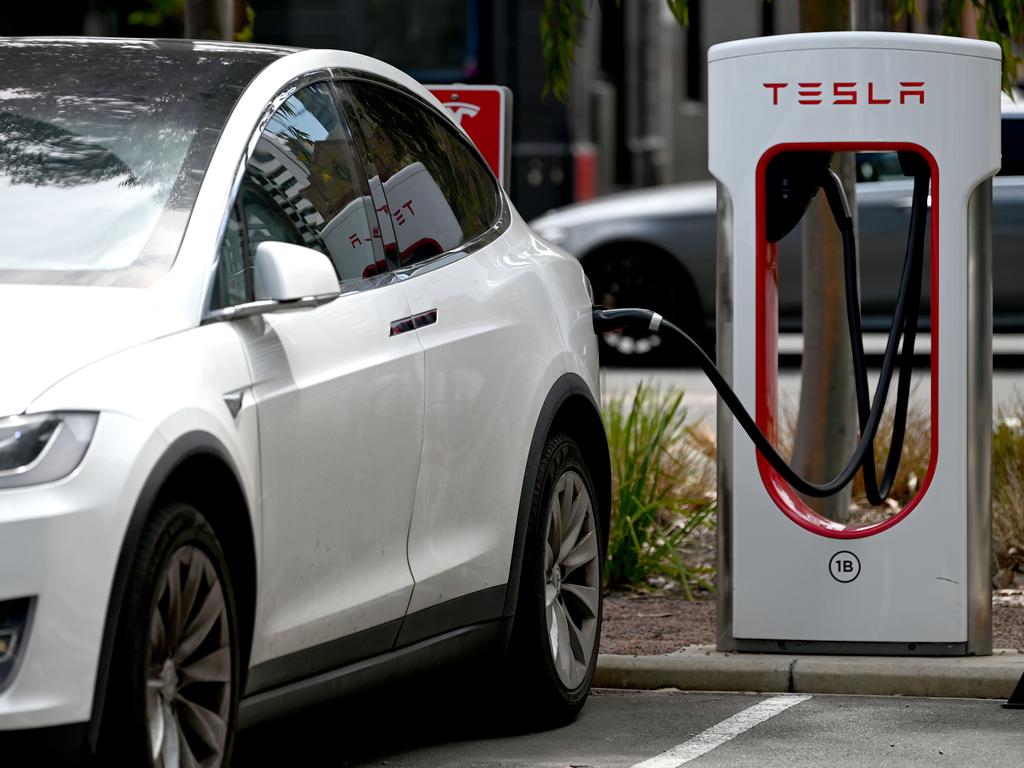Aussie electric vehicle owner’s creative charging method may cause more problems than it solves
Radio host Ray Hadley has absolutely torched an electric vehicle owner after being shown what he described as “the most remarkable photo I think I’ve seen”.
Radio host Ray Hadley has absolutely torched an electric vehicle owner after being shown what he described as “the most remarkable photo I think I’ve seen”.
The 2GB star said he was sent a picture of an EV being charged on the side of the road with the cable being run through a stormwater pipe.
“This is how one EV owner charges his car. He drags the electrical cord through the stormwater pipe and onto the street,” Hadley told listeners on Monday.
“This is priceless.
“He’s actually got his electric vehicle charging with the lead going through the stormwater pipe.
“I don’t know whether he knows that water and electricity don’t really mix and could cause him some sort of problem.”
The driver’s number plate was obscured to save them some embarrassment.
Australia has embraced the EV boom, but there are several glaring issues in the rapid transition from combustion engines to battery-powered cars.
Earlier this year, it was revealed that the cost of fast-charging is accelerating beyond the price of refuelling conventional vehicles in Australia.

Though the “range anxiety” that discouraged people from buying electric cars has been mitigated by 1000 fast-charging outlets across the country, increasingly high charging fees could make drivers hesitant to make the switch.
Evie Networks, Australia’s largest fast-charging provider, has increased prices by 80 per cent in five years, from 35 cents per kiloWatt hour in 2020 to 63c/kWh during peak periods today. Charging is slightly cheaper – 53c/kWh – during overnight off-peak periods which start at 9pm and finish at 10am.
Tesla’s Supercharger network is even more expensive for vehicles made by rival brands – some sites charge 92c/kWh for energy.
Recharging the 60kWh battery of a popular medium-sized EV such as the BYD Atto 3 could cost $55 for about 390 kilometres of range, while a larger Kia EV9’s 100kWh battery costs about $90 for about 500km of driving.

Ampol, which received a $100 million government grant in August to help pay for its “AmpCharge” outlets at petrol stations, has blamed electrical grid administrators for missed targets in its EV rollout.
Ampol chief executive Matt Halliday told investors in August that 100 charging sites were either under construction or awaiting connection, citing “enabling infrastructure” on the grid as a stalling point.
BP scaled back global ambition for its “BP Pulse” outlets in April and ChargePoint shut down its 46 Australian outlets in January, not long after Queensland-based EV hardware giant Tritium went bust in late 2023.



